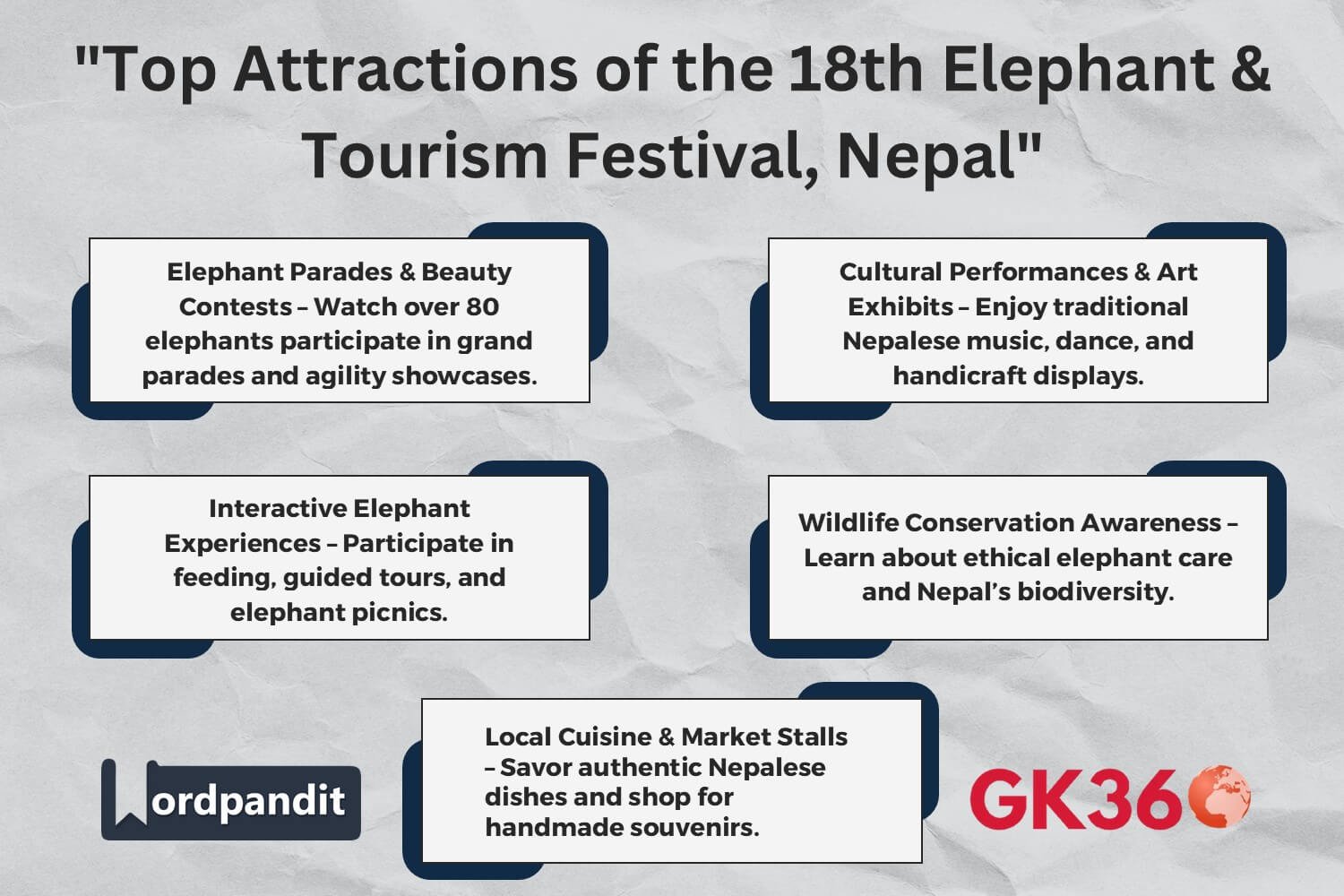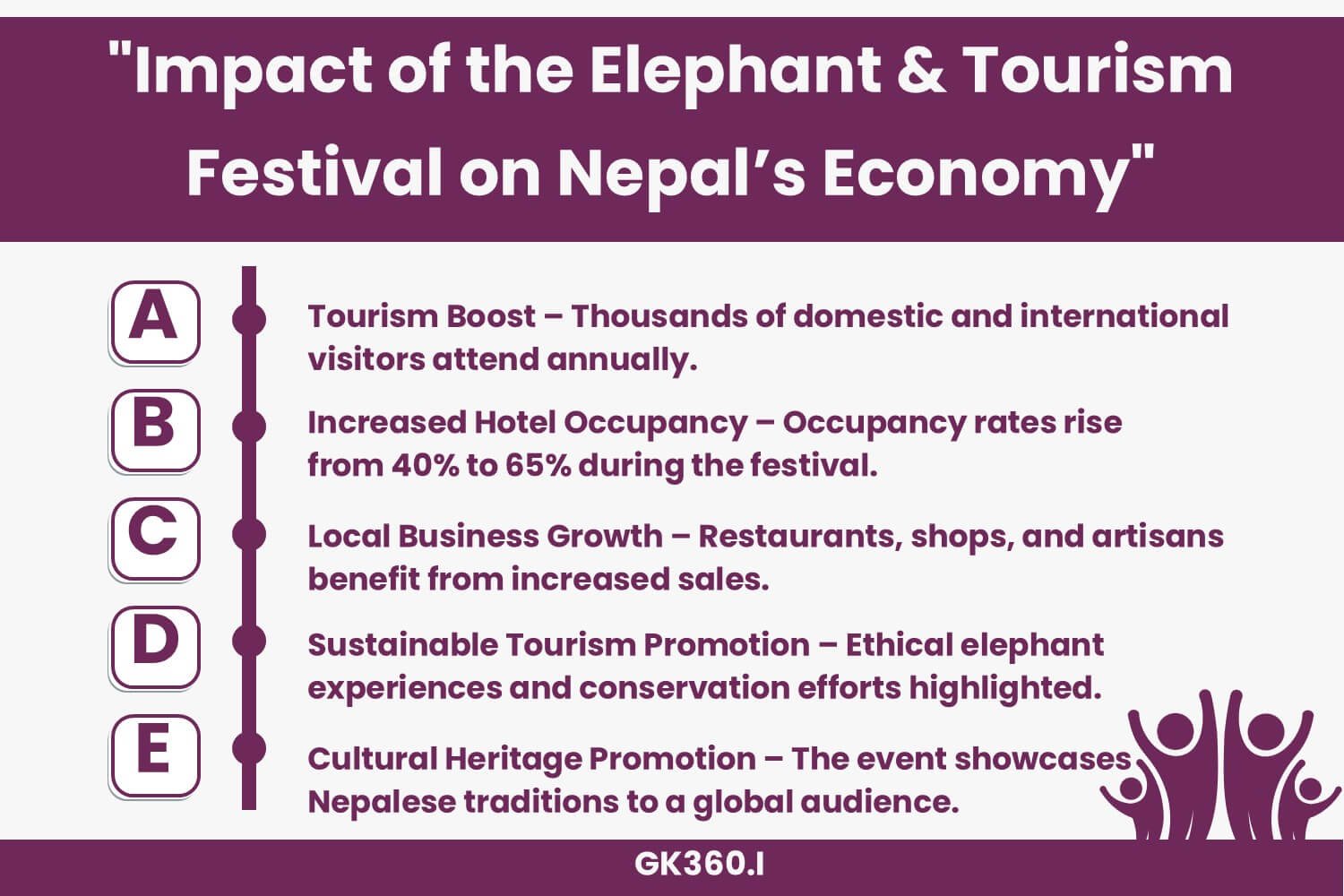18th Elephant & Tourism Festival, Nepal: Events, Attractions & Impact on Tourism
Introduction
Nestled in the scenic surroundings of Sauraha, Chitwan, Nepal, the 18th Elephant & Tourism Festival is captivating both domestic and international visitors with its vibrant blend of culture, wildlife interaction, and festive cheer. Held at the Baghmara Intermediate Community Forest, adjacent to the renowned Chitwan National Park, this five-day festival coincides with Christmas and New Year celebrations, offering a unique experience for all attendees.
Beyond being an annual spectacle, the festival significantly boosts Nepal’s tourism industry, promoting ethical tourism while showcasing the region’s rich biodiversity and cultural heritage. The festival will conclude on December 30, 2025.

Table of Contents
- Introduction
- What is the Elephant & Tourism Festival?
- Location and Dates of the Festival
- Major Attractions of the Festival
- Animal Welfare & Ethical Tourism Efforts
- Impact on Nepal’s Tourism Industry
- How to Visit & Travel Tips
- FAQs
- Conclusion & Call to Action
What is the Elephant & Tourism Festival?
The Elephant & Tourism Festival is an annual event celebrated in Sauraha, Chitwan, Nepal, near Chitwan National Park, a UNESCO World Heritage Site. The festival aims to highlight wildlife conservation, Nepalese culture, and sustainable tourism by offering unique experiences centered around elephants and local traditions.
Held during the peak Christmas and New Year holiday season, the festival attracts thousands of tourists, making it one of Nepal’s most prominent tourism events.
Location and Dates of the Festival
- Location: Sauraha, Chitwan, Nepal
- Venue: Baghmara Intermediate Community Forest (Adjacent to Chitwan National Park)
- Duration: Five days
- Closing Date: December 30, 2025
The strategic timing of the event allows visitors to enjoy Nepal’s winter season, blending cultural festivities with wildlife exploration.
Major Attractions of the Festival
Elephant Parades & Beauty Contests
- Over 80 elephants, including Champakali, Basnatikali, and Ramkali, participate in grand parades, beauty pageants, and thrilling football matches.
- The festival showcases elephant agility through penalty shootout competitions, highlighting their intelligence and training.
Cultural Performances & Local Art
- Traditional Nepalese music, dance, and attire bring the region’s rich heritage to life.
- Local artisans display handcrafted souvenirs and traditional artwork, offering visitors an authentic cultural experience.
Interactive Experiences & Picnics
- Elephant picnics allow visitors to interact with the gentle giants by feeding them and learning about their habits and care.
- Guided tours provide insights into elephant conservation and sustainable tourism.
Animal Welfare & Ethical Tourism Efforts
- Elephant polo, previously part of the festival, has been removed to align with ethical tourism practices.
- Organizers ensure that elephants receive regular breaks, refreshing sugarcane snacks every five minutes, and proper care.
- These steps reflect Nepal’s commitment to wildlife conservation and responsible tourism.
Impact on Nepal’s Tourism Industry
Economic Boost & Hotel Occupancy Rates
- Local hotels offer special discounts during the festival, leading to an increase in occupancy rates from 40% to 65%.
- The influx of visitors benefits local businesses, restaurants, and handicraft vendors, stimulating economic growth.
Role in Promoting Sustainable Tourism
- The festival raises awareness about wildlife conservation and Nepal’s commitment to ethical tourism.
- It supports local community initiatives that promote sustainable tourism and environmental responsibility.
How to Visit & Travel Tips
- Nearest Airport: Bharatpur Airport (17 km from Sauraha)
- By Road: Accessible via buses and taxis from Kathmandu (160 km away)
- Accommodation: Various hotels, resorts, and homestays cater to different budgets
- Best Time to Visit: During the festival for a blend of wildlife, culture, and celebrations

FAQs
1. When is the Elephant Festival in Nepal?
The festival runs for five days, concluding on December 30, 2025.
2. How can visitors interact with elephants?
Guests can participate in elephant picnics, feeding sessions, and guided tours.
3. Is the festival ethical and animal-friendly?
Yes, the festival has eliminated elephant polo and ensures proper care and rest periods for the elephants.
4. What are the best ways to reach Sauraha, Chitwan?
Travelers can reach Sauraha by air (via Bharatpur Airport) or road (buses/taxis from Kathmandu and Pokhara).
5. What other attractions are nearby?
Visitors can explore Chitwan National Park, local Tharu villages, and canoeing tours along the Rapti River.
Conclusion & Call to Action
The 18th Elephant & Tourism Festival is a must-visit event for travelers seeking a unique blend of wildlife interaction, cultural festivities, and sustainable tourism. The festival’s commitment to ethical elephant care, Nepalese heritage, and tourism development makes it an unforgettable experience.
Key Takeaways
| Aspect | Details |
|---|---|
| Event Name | 18th Elephant & Tourism Festival, Nepal |
| Location | Sauraha, Chitwan (Adjacent to Chitwan National Park) |
| Duration | Five days, concluding on December 30, 2025 |
| Main Attractions | Elephant parades, beauty contests, cultural performances, interactive experiences |
| Ethical Practices | No elephant polo; focus on animal welfare and conservation |
| Tourism Impact | Increased hotel occupancy, economic boost for local businesses |
| Travel Tips | Nearest airport: Bharatpur (17 km away); Accessible by road from Kathmandu |
Related terms
- Elephant Festival Nepal 2025
- Chitwan Elephant Tourism Festival
- Nepal Wildlife Festival 2025
- Ethical Elephant Tourism Nepal
- Chitwan National Park Events
- Sustainable Tourism Nepal
- Cultural Festivals in Nepal
- Nepal Travel Guide 2025
- Eco-friendly Tourism Nepal
- Best Time to Visit Nepal 2025





